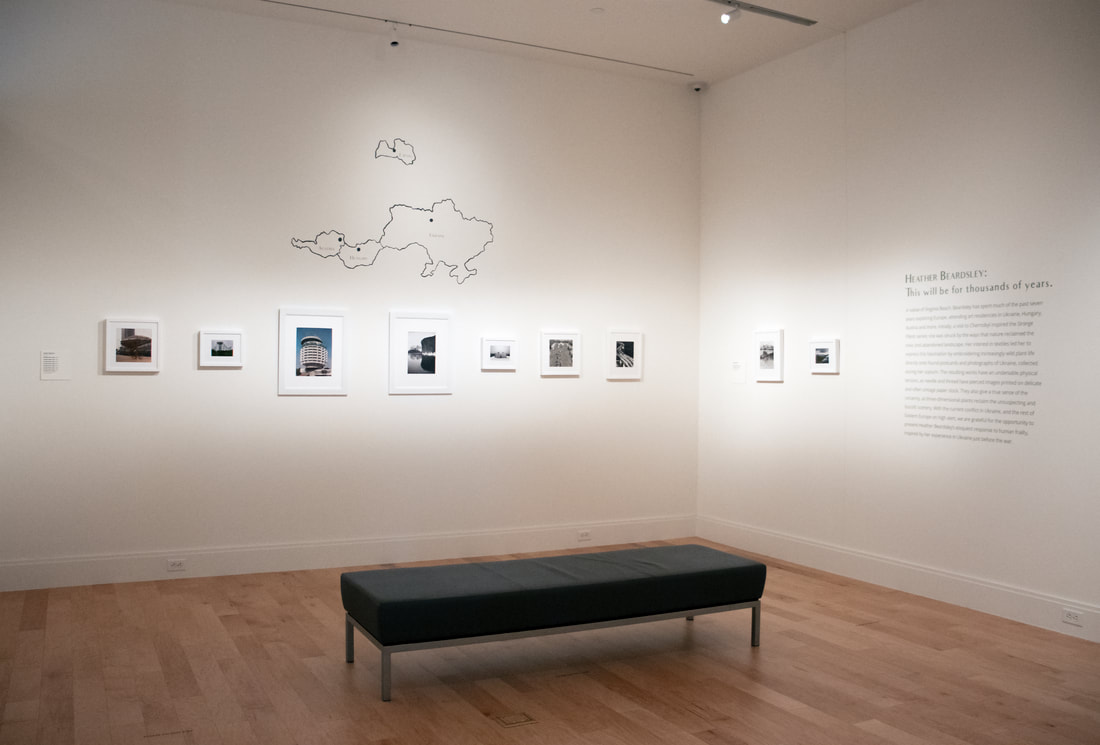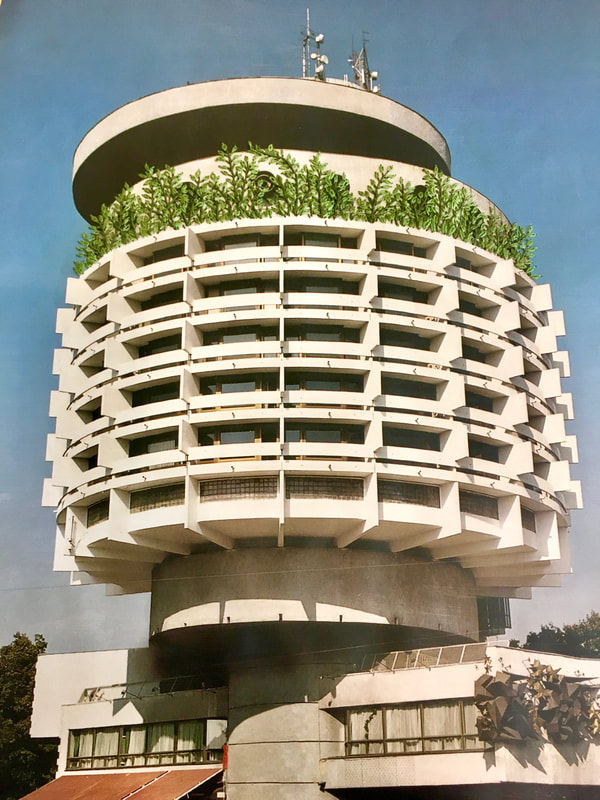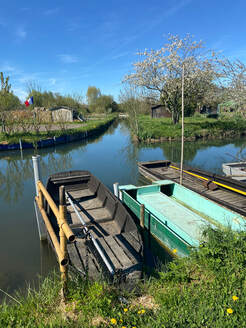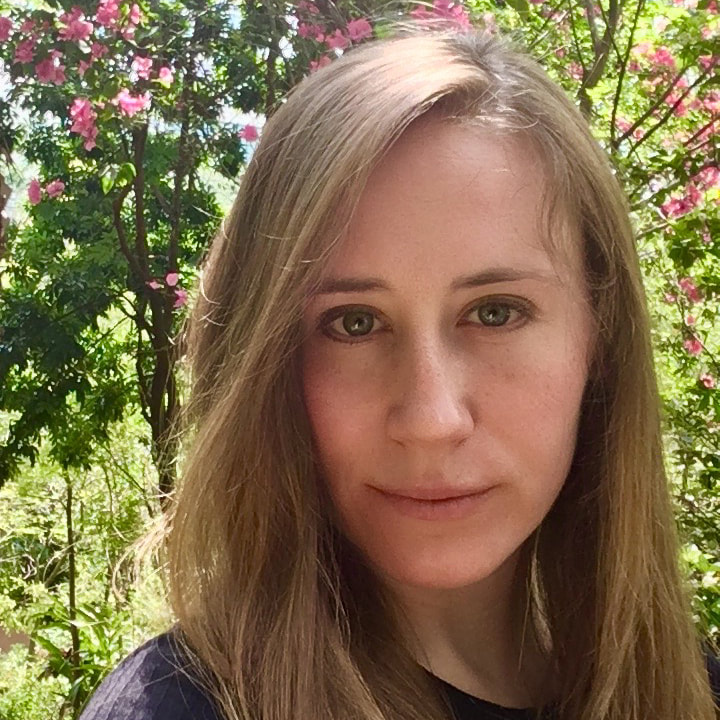|
On view in the Frank Photography Gallery from June 30-October 29, 2023 I have been visiting the Chrysler Museum of Art since I was a small child, yet it wouldn't be accurate to call having an exhibition there a childhood dream because it never occurred to me that something like that would be possible. I am so honored that Chelsea Pierce, the McKinnon Curator of Modern and Contemporary Art, and the other leadership of the museum have given me this opportunity. It means a lot more that the first comprehensive museum exhibition of this work is at my home museum, where I have history and where I can share the experience with the regional community that has shaped me as an artist. For more information about the show you can read the press release below or visit the exhibition page on the museums website. Programming Events: July 1, 2023: Informal Meet & Greet in the Frank Photography Gallery from 11am-2pm August 3, 2023: Gallery Talk in the Frank Photography Gallery at 6pm, reception in Huber Court following September 16, 2023: Cut and Place Collage Workshop- Adult Studio Class: 10:30am-12:30pm, $25 for members, $40 for nonmembers
0 Comments
I definitely haven't met my goal of doing a blog post every month or so this year, but hopefully this feature on my work by my local PBS affiliate shows why that is. Since returning from France in May, my art has been featured in three regional museums in Hampton Roads, Virginia. This video talks about the recent bodies of work in my solo exhibition at the Barry Art Museum in Norfolk, VA, and group exhibitions at the Torggler Fine Arts Center and the Virginia Museum of Contemporary Art. "Slava Ukraini,"I remember the first time I said those words when visiting Lviv in 2017. I knocked on a steel door at the end of an unlit passage off one of the main squares in the city. A slot in the middle opened and a voice asked me in Ukrainian for the password. "Slava Ukraini", or victory to Ukraine, was my reply. The door opened and a middle-aged man in a military uniform and fur hat ushered me quickly inside. He poured two shots of clear liquor that we took together, then he swung open a hidden door behind a bookcase. I descended the dark staircase...into the restaurant operating out of this Soviet era bunker. The entire experience was very tongue-in-cheek, with servers maintaining the gimmick of underground resistance by wearing uniforms and serving the food in military canteen kits. I had even heard there was an area where people could shoot photographs of Vladimir Putin, but if it was there I didn't see it. There was an edge to the production though, as Ukraine had been at war with Russia in Crimea and the Donbas since 2014. It was my first visit to Ukraine and a week later I was on a bus from Kyiv to Chernobyl. I had first heard about the nuclear disaster there when I was ten and a girl from Belarus stayed with my family one summer as part of a program to get children out of the radiation part of the year. As I sat on the bus I watched surreal videos of men in hazmat suits walking through Pripyat with while adults and children went about their daily lives unprotected around them.
At one point we stopped in front of rows of dozens of crosses inscribed with names in the Cyrillic alphabet. I was confused, knowing it was far too few to represent people that had died, the guide informed me that these crosses each represented a village that had 'died' as a result of the disaster. Generations of family history were razed in buried, I wonder if any survivors would even been able to locate the sites today. What surprised me most about the trip though was how serene it was. Silent except for the crunch of wet, virgin snow under our feet, this place that saw the worst man-made disaster in history seemed in the intervening thirty years to have healed itself. In some areas the woods are so dense you couldn't see any buildings, then suddenly a lamppost would appear amongst the trees likes something out of the Chronicles of Narnia. Despite being the "most contaminated place on earth", the disappearance of humans has lead to a surprising return of biodiversity in the area where endangered populations like wolves have somehow thrived. The contrasting feelings of loss and hope elicited by this visit stayed with me, tied inextricably to the images of plants growing unbridled over the amusement park rides and apartment blocks. Within a few months I had begun drawing and embroidering these scenes into photographs taken from old architecture books. In 2019 I returned to Ukraine to develop this project further during a residency at IZOLYATSIA in Kyiv. On this trip as well the presence of the war wasn't directly felt, but manifested itself in strange ways. The IZOLYATSIA Arts Foundation was originally located in a converted factory in the city of Donetsk in the Donbas region. In 2014 it was seized by Russian forces and converted into an illegal DPR prison where leaked images show inhumane conditions and evidence of torture. This wasn't the relocated IZOLYATSIA I experienced far away from the war in Kyiv. Its present home is within the grounds of a ship-building factory, the offices and resident apartment situated on the second floor of the workers dormitory. Living there was a window back in time to life in the Soviet Union, lunching at the worker's canteen and returning from a day of exploring to a Babushka guarding the door and half-dressed men coming to the ground floor to use the dormitory showers. The former IZOLYATSIA was in the news while I was there though, courtesy of a controversial prisoner exchange agreement for prominent Ukrainian journalist Stanislav Aseyev, who had been imprisoned there for two years. Despite Ukraine being at war with Russia during all of my four trips there between 2017 and 2020, I was still shocked when Russia launched their full scale invasion in February 2022. Even though I have spent more time in Eastern Europe than most Westerners I know, I was either blind or in denial about how far Putin was willing to go to reclaim a piece of Russia's lost empirical glory. Directly inspired by my visit to Chernobyl, I have worked continuously on the series Strange Plants since 2018. Often since February I have felt like this work related much too closely for comfort to the news coming out of the war in Ukraine. The first day of the invasion the Russians were firing artillery in the vicinity of the sarcophagus housing Reactor 4 at Chernobyl, and not long after came reports of Russian soldiers being hospitalized for digging trenches in the irradiated soil of the Red Forest that surrounds the site. More recently the heaving fighting and power outages around the Zaporizhzhia nuclear plant have drawn international concern over the threat of a 'second Chernobyl'.
Ukraine is part of the soul of this work, it was before the invasion and its influence remains now. What I don't know, and am much less comfortable with, is how and if my work can be used to talk about the present conflict. Ukraine isn't my home, no ancestral connection even. I can't speak to the tremendous loss of life, home, security and culture the Ukraine people are experiencing. But Ukraine is still real to me in a way only a place one's spent time in can be. Watching news footage of war from afar can feel alien to the point of being almost dehumanizing, as if the brain needs to other and maintain a sense of separation from the suffering, violence and destruction to keep functioning. Maybe that is where my pieces can serve a purpose, sharing something of Ukraine outside of war with people in America and elsewhere, a piece of the culture I experienced there that Russia now seeks to extinguish. Shortly after the invasion began in February a Ukrainian curator shared some of my images of Kyiv on Instagram. When I messaged to thank her, she replied that looking at the pictures reminded her of the beauty of the city and made her happy, so she wanted to share that feeling with others. My exhibition This will be for thousands of years at the Barry Museum in Norfolk, VA, features many of these embroidered photographs of Kyiv along with other cities in Eastern Europe. I was afraid showing these pieces now might be seen as trying to capitalize on the recent, unfortunate, relevance of this series to current events. I do think there it is important to show this work now though, to share images of Ukraine that aren't dominated by tanks and bombed out buildings, images that connect Ukrainian cities to other cities around the world. The title is a quote from Svetlana Alexievich's collection of first-hand stories of survivors Voices from Chernobyl. It's a reminder that our actions today can have impacts that last longer than the human mind can comprehend. Witnessing the regrowth at Chernobyl gives me hope that though the impact of the war will remain, Ukraine will come back from this even stronger and more beautiful than before.
There will be an evening of programming around the theme of conservation to accompany the exhibition Friday, September 9, 2022 from 5pm to 8pm and the exhibition will be on display until the end of 2022. For more information about the event and the exhibition you can visit the links below: https://www.eventbrite.com/e/u-nite-collection-conservation-tickets-367018130107 https://barryartmuseum.odu.edu/exhibition/strange_plants/ Scroll down for pictures of a cute medieval French town and weird plant art, the rest is just neurotic musings...you've been warned. When I arrived in Bourges February 1st, it had been nearly two years since my last art residency in February 2020. Two years of not only working in my house, but barely leaving it. It was an opportunity I waited so long for, I was ready to do something amazing, bigger and better than I had ever done before. For the past few years I've been making miniature sculptures of plants growing through cities and over buildings, starting at another residency in Budapest in 2018 with match boxes, and expanding to cigar boxes and vintage suitcases.
It turns out I bit off a bit more more than I could chew though. I had originally envisioned working with recycled architectural models from architecture students, but the logistics of that became too complicated so I settled for 3D prints of Paris instead which were a lot smaller. This meant not only having to scale down the size of the grass around the buildings, but also having to cover a lot more area with the clay pieces. From the beginning of the project I knew I needed to plan for return shipping to the USA, the most expensive single part of the whole project, so I divided the foam board I was using a base into several smaller panels. Originally there were twelve, about one month in I realized I couldn't finish that so I removed two off of each end to make eight my goal for the residency. Now, as I approach my last week, I will be happy if I leave with six of these panels finished. Finding a good balance is still my biggest struggle as an artist. How do I balance the work I came to France to do with enjoying the experience of living in France? How do I balance the taking full advantage of the opportunities I receive with looking for other opportunities? How do I balance maintaining relationships with developing new ones? The remove or respite from regular life that is one of the best things about art residencies also means a lot of time to let these kinds of thoughts creep in and take over, especially for someone that's already neurotic like me. The division of time and focus never feels satisfying, doing well in one aspect usually means I'm neglecting the others. This being my first residency in so long only amplified these unrealistic expectations of what I can realistically accomplish, and the gnawing feeling that no matter what I do it's never enough.
So the last six weeks I have allowed myself to "waste" time exploring the medieval old town of Bourges and wandering through the gardens of Le Marais. I found a perfect tree with branches hanging over a canal to sit and sew in, and became a regular at adorable local cafes (where of course I am also sewing). I love the slower, more deliberate pace of life in Bourges, with shops closed Sundays and mid-day for sieste, and I wish I could have gotten to this headspace earlier in my time here. I understand how this whole blog post may just read like the cliche of needing to stop and smell the roses, although tulips would be more appropriate for Bourges, but when chasing the dream of a self-sufficient career in the arts drawing those boundaries is especially hard. What if you would have made an important connection at that opening you skipped because you were too tired, or that application you didn't finish because you chose to go to bed at a reasonable hour would have been the one in twenty you would have gotten? These aren't cases of FOMO, but real career decisions that can have equally real outcomes, so the quest for balance continues.
Before the pandemic began it had been over three years since I had spent more than three months in any given city. Travel wasn't a hobby or vacation for me, it had become a necessary part of the process for making and supporting my work. Within a couple months of graduating from SAIC with my MFA in 2015, I sold nearly all of my furniture and household belongings and moved to Vienna, Austria for a Fulbright Scholarship in Installation Art. At the time I thought it would just be a one year thing, a short reprieve before I went back to waiting tables or started the adjunct teaching grind. After a few months in Austria though, I knew I didn't want to go back yet. I used the time provided to me by grants and residencies to apply for more grants and residencies. I didn't have an apartment or even furniture to go back to, so I just kept moving. When there was a few months down time between residencies I would find a cheap sublet, visit friends and family, or even pass a month or two exploring to a country with a low-cost of living. I love the opportunity to see new places, and being immersed in another culture, but honestly the best part of these residencies is the feeling of validation that comes from being paid to make art. Suddenly the long nights in the studio don't feel so self-indulgent, and I began to think I might actually be able to make this art thing into a career. Sometimes it could be lonely living places that I didn't know people, but living abroad meant constantly pushing myself as both an artist and a person. Then everything shut down, residencies were cancelled, and I found myself with nowhere to live. With less than 24 hours notice I flew back to the US from Ukraine, to my parents house where I stayed in a room by myself for two weeks, eating meals off trays my mom left outside the door for me while I self-quarantined.  my quarantine companion my quarantine companion Thankfully I didn't know then that it would be nearly two years before I could do another residency again. In the interim there was a lot of time for soul searching (probably too much time), and if I'm being honest there was a fair amount of self-pity too. Even before the shutdowns I knew I couldn't keep living the way I was indefinitely, after five years living out of a suitcase and relying on applications for income and housing was wearing on me more than I was willing to admit to anyone. But how could I say no to these opportunities, it's not as though there was a well-paid job with benefits waiting for me back in the States, let alone institutions offering to fund my art. It felt like my choices were to keep fighting through the burnout and financial anxiety, or give up on travel and the residency circuit all together because the stipends aren't enough to sustain an apartment in the US while I'm away. I've made a lot of sacrifices over the past decade and some change chasing this dream, and to stop now and start a new career from scratch in my mid-30s feels like taking a loss. I wish I could say I had an epiphany during the pandemic, and my future path is now clearly laid out before me. I still don't know how much longer I will keep traveling, and I don't want to give myself a hard deadline. I have been working on improving and developing systems when it comes to goal-setting, time management, and all of the other things that fall of the professional side of being an artist. Even more importantly, I'm learning it's okay to ask people for help and admit when things aren't going well, and I'm seeking out support networks and spaces where it's okay to talk about these things. I guess that's why I decided to share all this, because I'm aware that with everything going on in world these are very privileged problems to have. I think it's important for artist's to share their problems, privileged though they may be, because otherwise we're left looking at the Instagram highlight reel and wondering how everyone else seems to have figured it out. My life on social media may look like an artist's dream, hanging out in Germany or France, working in my new studio of the month, but half the time I don't even know where I'm going to live after. For now it still feels worth it, and I'm so grateful to be at a residency again, I just want to be more transparent about the tradeoffs. this life requires. This post ended up being pretty long, so thank you if you've read this far. If other people have positive and negative art residency experiences I would love to hear about them. Once I get a little further into my residency in Bourges, I plan to make a post about life and the project I am working on here. So I have historically been terrible at maintaining this section of my website. Sharing my accomplishments and talking about my work in a personal way are two things that have always made me uncomfortable. I find it much easier for me to write about what I'm making in a detached, academic way, almost as if they were made by someone else. It's vulnerable showing my personality and experiences online, it feels different to have people reject you than your work and there are so many stereotypes about self-obsessed millennials performing their lives on social media I don't want to play into.
But I think it's time for me to finally get over that. I'm realizing it's important to be more open and offer more of myself when asking people to engage seriously with my art. The fact is my art has taken me, metaphorically and literally, to some amazing places, and sharing that can people understand my work on a deeper level and help other artists as we pool our collective knowledge to figure out how to make this lifestyle work. Not only do I want to commit to posting regularly on this blog about studio and career updates, I also will be going back and retroactively writing posts detailing my experiences at art residencies, and sharing more process documentation for past and ongoing bodies of work. I will have these tagged and organized so they can be easily searchable for artists looking for more information residencies, or techniques. My goal is to post at least once a month with studio updates, hopefully more often in the coming months as I play catch up writing entries about the past few years. Nearby- Faraway opens in Bratislava tomorrow night at Gallery SVU, featuring a couple of my Migrant Maps dealing with the displacement of Syrian Refugees. It will be on display until June 26.
I recently received a Braunschweig Projects International Artist Scholarship from the Ministry of Science and Culture of Lower Saxony. From December 2016 to November 2017 I will participate in an Artist in Residence at the Braunschweig University of Fine Arts, in Braunschweig, Germany, culminating in an exhibition at the end of the year. I am so excited to get to work in this big, beautiful studio in an old warehouse on the outskirts of town.  The city center is super charming and it's been a lot of fun to explore.
One of my Migrant Map series will be featured in the 19th International Open at Woman Made Gallery in Chicago. It will be on display from 8/12 - 9/10/2016.
I'm excited to be showing my work in Bratislava for the first time as part of the group exhibition "Inšpirácia papierom III" at Galeria X.
|
Heather Beardsley is an American visual artist. In 2016-2017 she was awarded an International Artist Scholarship by the Ministry of Science and Culture of Lower Saxony, Germany. She received her MFA from the School of the Art Institute of Chicago in Fibers and Material Studies in 2015. She has exhibited work throughout the United States and Europe. Archives
June 2023
Categories
All
|
|
|























 RSS Feed
RSS Feed